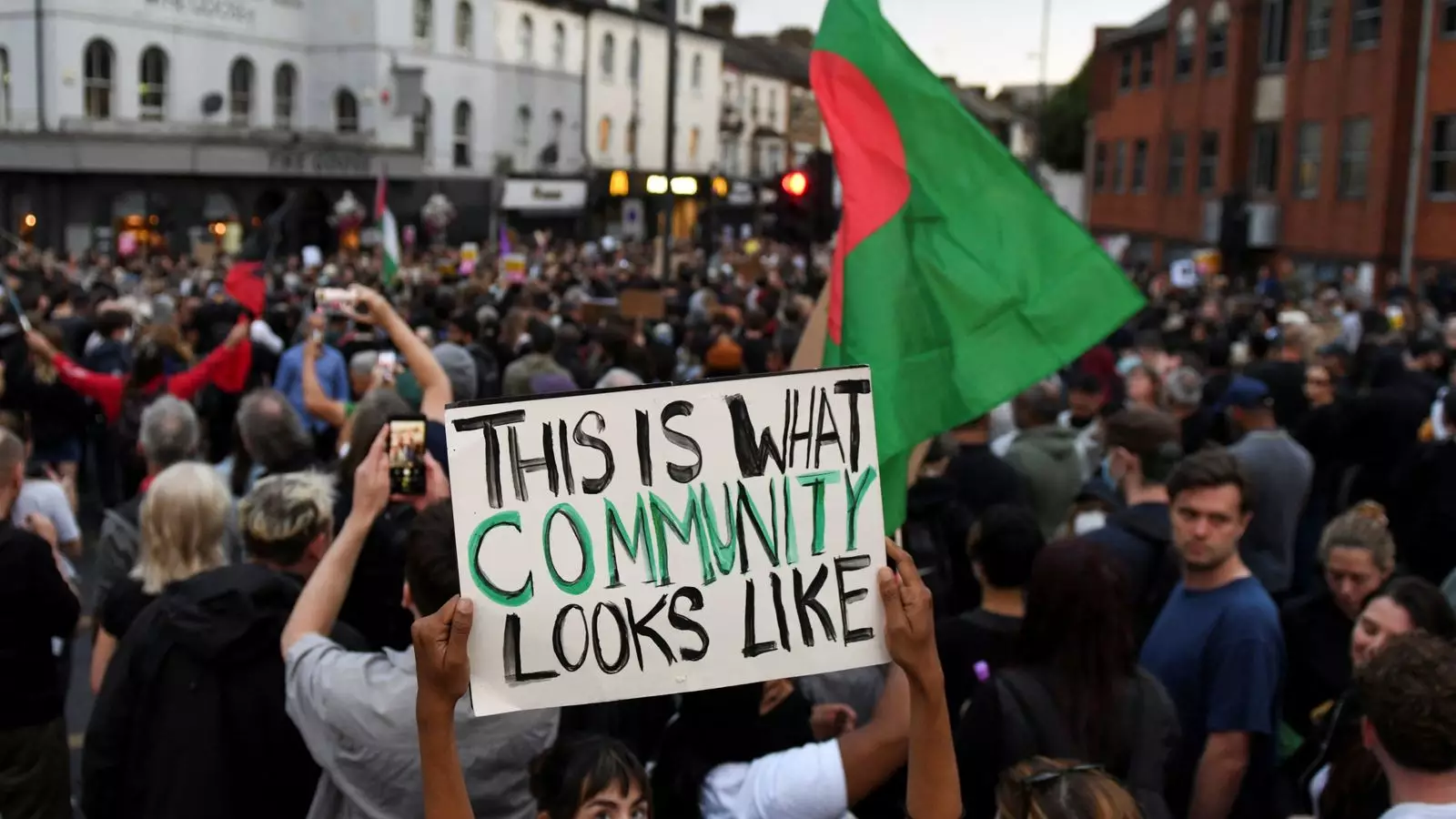In the face of at least 100 far-right marches being planned for Wednesday night in various UK cities, a significant number of counter-protesters took to the streets. People in towns like Bristol, London, Liverpool, Birmingham, and Brighton actively participated in demonstrations against hate and racism. The mobilization of more than 6,000 specialist police officers indicated the seriousness of the situation, as authorities feared a repeat of the violence that had erupted in multiple locations over the past week. The momentary peace that prevailed in most cities, crowded with demonstrators rather than violence, represented a powerful exhibit of solidarity against far-right extremism.
Despite the initial warnings and precautions taken by businesses and organizations, the mass far-right protests that were anticipated failed to gather momentum. Instead, it was the counter-demonstrators who seized the initiative and came out in thousands to voice their opposition to hate and bigotry. In Birmingham, a large group of anti-racism protesters assembled outside a migrant center, showcasing signs with messages like “no place for hate” and “bigots out of Brum”, as they marched through the city center without any far-right presence. A similar scenario unfolded in Bristol, where a calm and relaxed atmosphere prevailed with people engaging in music and peaceful protests. The absence of far-right groups in these instances signified a triumph for the values of inclusivity and acceptance.
Spirit of Unity and Resistance
In various cities like Walthamstow, Liverpool, and London, the spirit of unity and resistance was palpable in the form of hundreds of individuals standing guard outside asylum centers and day centers to protect vulnerable communities. Chants of “migrants are welcome” and “fascists out” reverberated through the streets, as people banged drums and displayed placards with messages denouncing racism. The Stand Up To Racism group played a pivotal role in amplifying these counter-protests, showcasing the power of collective action in the face of hate speech and discrimination. The visible absence of far-right protesters in many locations was a testament to the efficacy of these peaceful demonstrations in thwarting potential violence and chaos.
While there were reports of scattered far-right protesters in certain areas like Portsmouth, Brighton, and Blackpool, the overall impact of the counter-protests seemed to have dissipated the threat of widespread disorder. The intelligence suggesting 100 far-right protests had been deemed credible initially, raising concerns about public safety. However, the proactive measures taken by law enforcement, albeit low-profile, contributed to maintaining order and preventing any major confrontations. The emphasis on rapid response and severe consequences for troublemakers underscored the government and police’s commitment to upholding the rule of law and protecting communities from harm.
The events surrounding the counter-protests against far-right marches in the UK exemplified a remarkable show of unity, resilience, and peaceful resistance against hate and discrimination. The mobilization of thousands of individuals across various cities to denounce xenophobia and racism reflected the collective strength of communities in standing up for inclusivity and diversity. The absence of far-right groups in the face of mass counter-protests highlighted the power of solidarity and peaceful activism in safeguarding vulnerable populations and promoting social cohesion. As the country grapples with the aftermath of recent violence, the message of love migrants and hate racism resonates as a call to embrace tolerance and understanding in the face of division and intolerance.


Leave a Reply